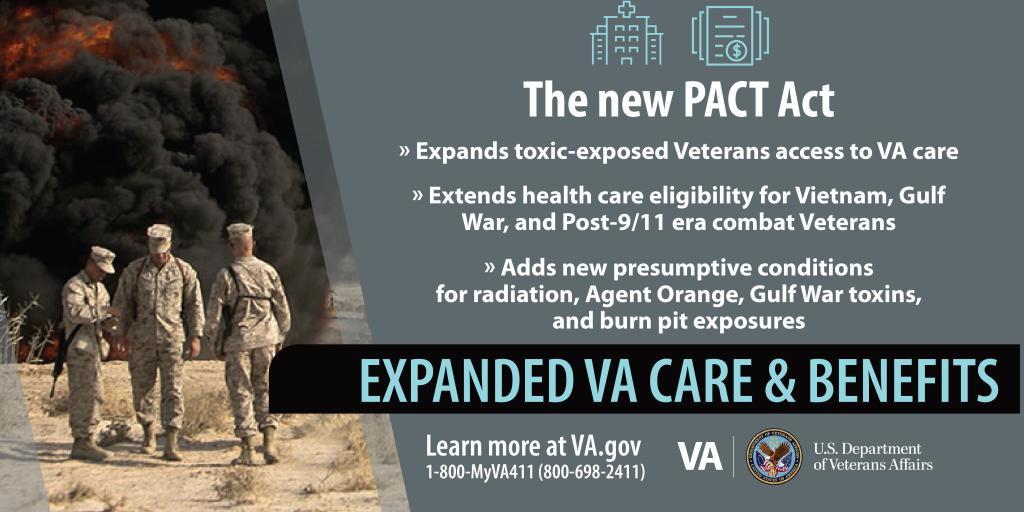Are you a veteran struggling with hypertension and feeling overwhelmed navigating the PACT Act? Read on!
In this blog, we will delve into the fine details of the PACT Act, focusing on its implications for veterans suffering from hypertension, thereby giving you a head start on a journey toward improved health.
You DESERVE a HIGHER VA rating!
WE CAN HELP.
Take advantage of a FREE VA Claim Discussion with an experienced Team Member. Learn what you’ve been missing so you can FINALLY get the disability rating and compensation you’ve earned for your service.
The PACT Act in Detail
Explanation of the PACT Act
The PACT Act is a landmark piece of legislation created to improve healthcare services for veterans. Its primary purpose is to enhance VA health care and benefits for Veterans exposed to burn pits, Agent Orange, and other toxic substances.
This landmark law transforms the landscape of veterans’ healthcare, altering the dynamics from a system-centric to a patient-centric one. It exemplifies a pragmatic approach to healthcare, breaking through red tape to give veterans prompt, efficient care.
The benefits of the PACT Act for Veterans with hypertension
Now, let’s explore the tangible benefits this Act has introduced, particularly in relation to hypertension.
Veterans with hypertension who served in Vietnam or fulfilled other presumed condition conditions may now qualify for disability compensation, even if they did not previously.
Additionally, the Act emphasizes the significance of early detection, continuous monitoring, and patient education.
The PACT Act has drastically changed the landscape of veteran healthcare, particularly for those living with hypertension. By understanding the Act in detail, veterans can use the law to their advantage, securing the best possible care for their condition.
Hypertension and Veterans
Exploring the statistics of hypertension among veterans.
Hypertension is a prevalent issue among veterans, affecting a considerable portion of this demographic. According to Veterans Affairs, hypertension is one of the most common disorders faced by veterans. This high occurrence of hypertension among veterans raises concerns and demands more investigation.
The reasons and risk factors for veterans being prone to hypertension.
Trauma and stress: The strains and traumas of military duty can cause long-term physiological changes that contribute to illnesses such as hypertension. Furthermore, the military lifestyle frequently entails lengthy durations of high-stress conditions, which might lead to the development of hypertension.
Transitioning from active duty to civilian life: Transitioning from active service to civilian life sometimes includes a significant lifestyle adjustment that might have an impact on health. An increase in hypertension rates can be attributed to changes in food, activity, and stress levels.
As we continue to navigate the complexities of the PACT Act and hypertension, it becomes increasingly clear how vital this Act is for veterans. Empowered with this knowledge, they can use the PACT Act to their advantage, overcoming the hurdles of bureaucracy and maximizing their health benefits.
Navigating the PACT Act for Hypertension

A step-by-step guide for veterans to leverage the PACT Act for hypertension treatment
The PACT Act is a powerful tool for veterans, but effectively utilizing it requires mastery. As such, let’s dissect this into actionable steps:
- Understanding Your Eligibility: As a veteran, your first step is understanding whether you are eligible for community care under the PACT Act. This hinges on several factors, including the availability of VA care in your area, the nature of your medical condition, and other personal circumstances.
- Consulting with Your Healthcare Provider: Collaborate with your VA provider or community healthcare provider to discuss your hypertension treatment options. This is crucial to establishing the best treatment plan under the PACT Act.
- Seeking Authorization: Once you and your provider agree on a treatment plan, the next step is to seek authorization from the VA. This involves completing specific documentation and formalities.
- Receiving Care: With authorization secured, you can start receiving hypertension treatment under the PACT Act. Ensure that you follow your treatment plan meticulously and stay in regular contact with your healthcare provider.
Potential areas where veterans might face obstacles
While the PACT Act offers valuable benefits, it is not without its complications. For instance, bureaucracy and red tape could potentially slow down the process of receiving care. Working around these obstacles to achieve your desired outcome is important in this case.
- Understanding the Fine Print: Understand the smallest of details related to this Act. Know your rights and entitlements. The more you know, the better positioned you will be to navigate any bureaucratic hurdles.
- Networking with Healthcare Providers: Build strong relationships with your healthcare providers. They can be valuable allies, helping you expedite the process and possibly bypass potential roadblocks.
- Keeping Detailed Records: Maintain thorough records of all your medical appointments, treatments, and communications with the VA. These records could be crucial if you ever need to prove you’re entitled to certain benefits.
Navigating the PACT Act effectively requires both understanding its provisions and having the strategic acumen to overcome any obstacles. With these insights, veterans can take full control of their hypertension treatment, turning potential challenges into opportunities for success, and services like VA Disability Coach can provide proper guidance during these times.
Real-Life Examples
To put the ideas we’ve covered into context, let’s look at actual veterans’ experiences navigating the PACT Act for hypertension treatment. Consider John, a Vietnam War veteran living in rural Wyoming. Because of the distance between VA hospitals, John has struggled to control his hypertension. John might receive care from a community hospital closer to his home thanks to the PACT Act. His condition has subsequently significantly improved, proving the PACT Act’s transformational impact.
Conclusion
We discovered the substantial effect the PACT Act may have on veterans’ health outcomes via our investigation of the Act and its impact on veterans living with hypertension. The PACT Act acts as a light of hope for many veterans by simplifying access to local healthcare professionals, enhancing treatment efficiency, and supporting a patient-centric paradigm.

